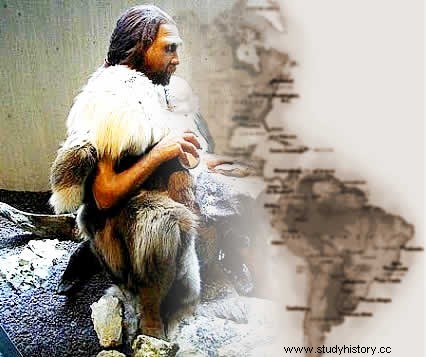
By Rainer Sousa
Theories that talk about the occupation of man in the Americas work with a very varied universe of dates, covering the range between 30 and 60 thousand years ago. In this field, we observe a vast number of archaeological, geological and paleontological researches interested in answering this question with greater precision. In fact, while the “when” appears as a question to be answered by such scholars, the “how” this happened appears as another challenge.
A thesis regarding this last question suggests that some of the first men would have naturally arisen in these lands. Although possible, this argument is not supported by the fact that, to date, no fossils older than Homo sapiens have been found on the American continent. For this reason, other explanations start from the idea that small human groups occupied this space through different migratory movements.
The oldest theory in this regard was defended by researchers working at the archaeological site of Clovis, in the United States. According to them, the final part of the last ice age lowered the sea level to the point that a strip of land connecting Alaska and Siberia came to the surface. In this way, Mongoloid and pre-Mongoloid human groups left Asian lands until they reached the northernmost portion of the American continent.
Another hypothesis has been working with the possibility of another migratory movement that took place from the navigation of the Pacific, through the Polynesian islands to the western and central regions of the Americas. In this possibility, it presupposes the existence of a rudimentary transport technology that allowed the gradual realization of small navigations that favored such an undertaking. Thus, the occupation of the continent could have taken place on different fronts.
